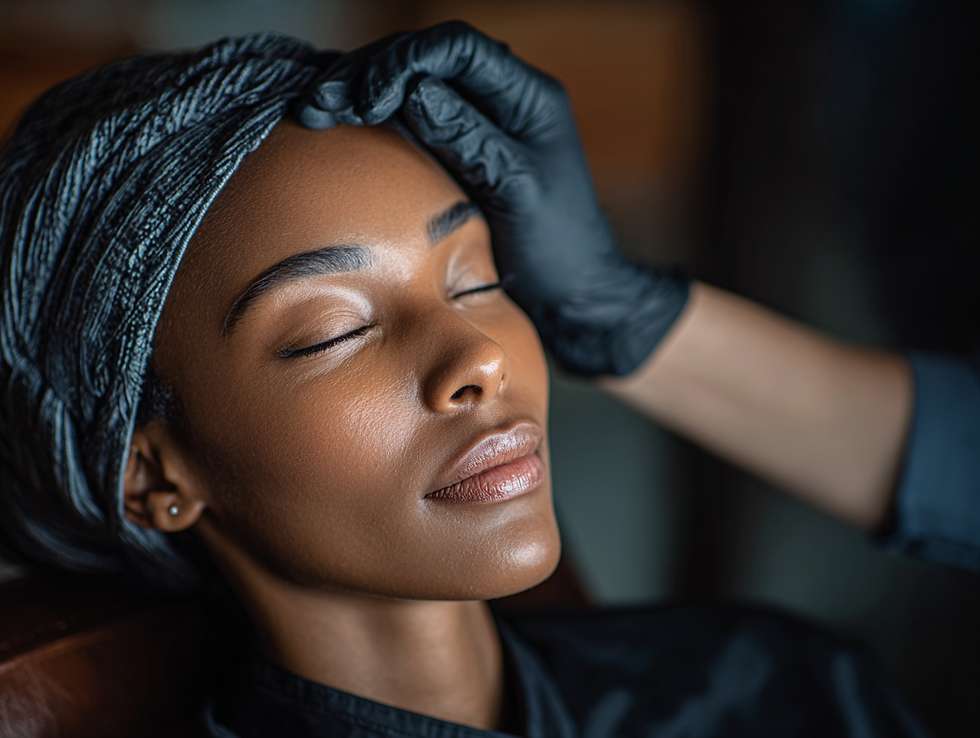Chemical Peels: Not as Scary as You Think
- Ojus Life
- Aug 4
- 4 min read

Forget the outdated image of red, raw skin and hiding indoors for days. Modern chemical peels have evolved into one of the safest, most customizable treatments in professional skincare. With advanced formulations and precise application techniques, today’s peels can be tailored to your skin type, concerns, and goals. That means visible improvements in tone, texture, and radiance without the downtime or discomfort that older methods were known for.
What Is a Chemical Peel, Really?
A chemical peel is a professional treatment in which a controlled solution of exfoliating acids is applied to the skin to encourage the removal of dead skin cells. This process reveals newer, fresher skin underneath and stimulates cell turnover.
Chemical peels are classified by depth, which determines how far into the skin they work and how much recovery time may be required:
Light Peels: Often made with alpha-hydroxy acids (AHAs) such as lactic or mandelic acid, these target the outermost layer of skin. They are ideal for a quick glow, mild texture smoothing, and brightening.
Medium-Depth Peels: Usually contain glycolic or salicylic acid, sometimes in combination. They penetrate more deeply to address acne, post-inflammatory marks, sun damage, and fine lines.
Deep Peels: Use trichloroacetic acid (TCA) or phenol to reach deeper layers of the dermis. These are reserved for more significant concerns such as deep wrinkles, severe pigmentation, or advanced sun damage, and they require longer recovery.
What Can Chemical Peels Help With?
Peels are versatile and can be adapted for a wide range of skin concerns, including:
Acne and acne scarring: Clears clogged pores, reduces inflammation, and fades red or brown post-acne marks.
Hyperpigmentation: Targets dark spots and evens overall skin tone.
Fine lines and wrinkles: Stimulates collagen production for smoother texture and more youthful skin.
Dullness and rough texture: Restores a healthy glow and improves the skin’s ability to absorb serums and moisturizers.
The Science Behind the Glow
Your skin naturally sheds dead cells in a process called desquamation, but this process slows with age, stress, and environmental damage. Chemical peels accelerate this turnover by breaking down the bonds between dead cells so they can be shed more efficiently. Beneath the surface, some peels also stimulate fibroblasts, leading to increased collagen and elastin production over time.
This dual action — exfoliation at the surface and regeneration in the deeper layers — is why chemical peels can both brighten and firm the skin.
But Will I Actually Peel?
Not necessarily. Peeling can vary widely depending on the strength and type of peel, your skin condition, and how your skin responds. Some people experience visible flaking or sheet peeling; others notice only mild dryness or tightness. Both responses are normal, and visible peeling is not required for the treatment to be effective.
In most cases, any peeling that does occur starts 48–72 hours after the treatment and lasts between two and five days. During this time, you should avoid picking or pulling at the skin to prevent irritation or scarring.
Safety First
Chemical peels are performed in layers to ensure safety and control. Your provider will start with a clean, prepped face, then apply the peeling solution evenly. You may feel a mild tingling, warmth, or prickling sensation that subsides quickly. The solution is either neutralized or left to self-neutralize, depending on the formulation.
Most light and medium peels take about 30–45 minutes from start to finish. Side effects are typically mild: temporary redness, tightness, or dryness that resolves within days. Deeper peels require more recovery and are usually done less frequently, often under the care of a dermatologist.
Pre- and Post-Treatment Guidelines
Before your peel:
Avoid retinoids, harsh exfoliants, and strong active ingredients for 3–5 days.
Pause waxing or hair removal in the treatment area.
Wear sunscreen daily to protect the skin before and after treatment.
After your peel:
Keep skin hydrated with gentle moisturizers.
Avoid scrubbing, picking, or using exfoliating products until fully healed.
Use sunscreen daily, as skin will be more sensitive to UV damage.
Follow your provider’s specific instructions for cleansing and product use.
Consistency Equals Results
While a single chemical peel can brighten and refresh the skin, the best results come from a series of treatments. Light peels can be repeated every 2–4 weeks, while medium-depth peels are spaced 1–3 months apart. Over time, repeated treatments can significantly improve skin clarity, reduce fine lines, and maintain a luminous complexion.
Chemical peels also pair well with other professional treatments. They can be scheduled before microneedling, PRP facials, or laser treatments to prepare the skin for deeper penetration of actives, or between treatments to maintain results.
Why Clients Love Chemical Peels
Immediate improvement in glow and smoothness
Quick, non-invasive sessions that fit into a lunch break
Minimal to no downtime for most peel types
Versatility in targeting multiple skin concerns
Compatibility with a wide range of skin types and tones when performed by a skilled provider
Final Thoughts
Chemical peels have moved far beyond the one-size-fits-all, aggressive approaches of the past. Today’s peels are sophisticated, adaptable, and safe when administered by a trained professional. Whether your goal is to brighten dull skin, smooth fine lines, or address stubborn pigmentation, there is a peel that can be customized to meet your needs.
By understanding what to expect before, during, and after treatment, you can approach your first (or next) peel with confidence. And with consistent care and sun protection, the results can be long-lasting, helping you maintain skin that not only looks better but feels healthier too.
References
Hetter, G. P. (2000). An examination of the phenol-croton oil peel: Part I. Plastic and Reconstructive Surgery, 105(6), 227–239. https://doi.org/10.1097/00006534-200005000-00037
Hetter, G. P. (2000). An examination of the phenol-croton oil peel: Part II. Plastic and Reconstructive Surgery, 105(6), 240–256. https://doi.org/10.1097/00006534-200005000-00038




